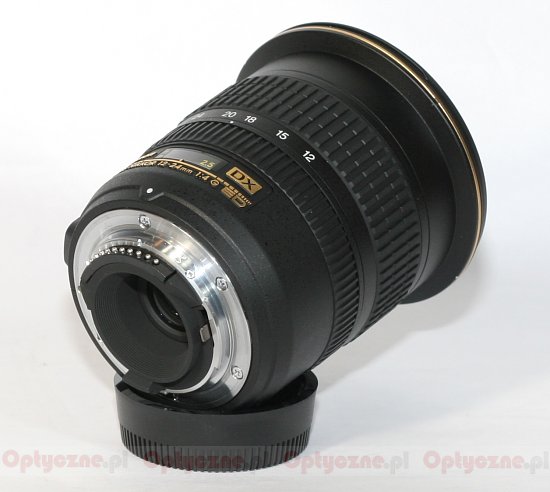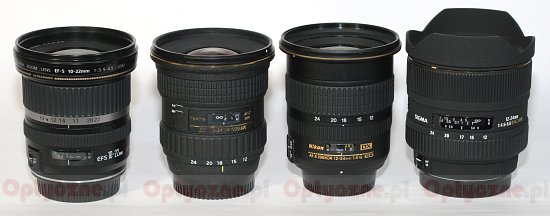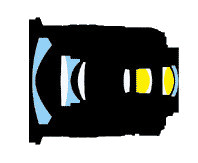Nikon Nikkor AF-S DX 12-24 mm f/4G IF-ED
3. Build quality
 |
It would be the easiest to compare the Nikkor with the Tokina because both instruments feature identical focal lengths range and the same fixed focal fastness of f/4.0. In the photo below they are positioned next to each other and in the company of the Canon 10-22 mm and the Sigma 12-24 mm. The Tokina makes an impression of a more solid device as it is the heaviest of all lenses of this class. It would be difficult to say whether it prevails over the Nikkor in this respect, though, because the Nikkor’s build quality, the solidity of the barrel and the mount are blameless. During 2-3 weeks of testing everything worked as it was supposed to: both rings are comfortable, smooth and well-damped; the distance scale is clear.
Please Support UsIf you enjoy our reviews and articles, and you want us to continue our work please, support our website by donating through PayPal. The funds are going to be used for paying our editorial team, renting servers, and equipping our testing studio; only that way we will be able to continue providing you interesting content for free. |
- - - - - - - - - - - - - - - - - - - - - - - - - - - - - - - - - - - - - - - - - - - - - - - -
 |
The Nikkor, although physically lighter than the Tokina and featuring the same dimensions, boasts additionally a SWM motor which is supposed to guarantee fast, silent focusing. What’s interesting, the Nikkor’s inner construction is the simplest of all wideangle lenses available on the market. It consists of 11 elements positioned in 7 groups. The most complicated device in this group is the Tamron/Sony 11-18 mm which has as many as 15 elements in 12 groups. Other lenses feature from 13 to 14 elements. The Nikkor, however, also has two low-dispersion ED glass elements to minimize aberrations of all kinds and additional three aspherical elements. Here it prevails over the Canon (3 aspherical, 1 UD) and the Tokina (2 aspherical, 1 UD), draws with the Tamron and is a bit worse than the Sigma (3 aspherical, 3 SLD). Although the number of elements as well as components of special usage help reaching good results, they don’t guarantee anything. The most complex Tamron construction is a perfect example here (and this lens also boasts the narrowest focal range so theoretically it is the easiest to manufacture) – its result didn’t impress us at all. The Canon and the Tokina, which were simpler, and the Sigma, which is also very complex, performed significantly better.

How the Nikkor fares in our test you can find out in the following chapters.






